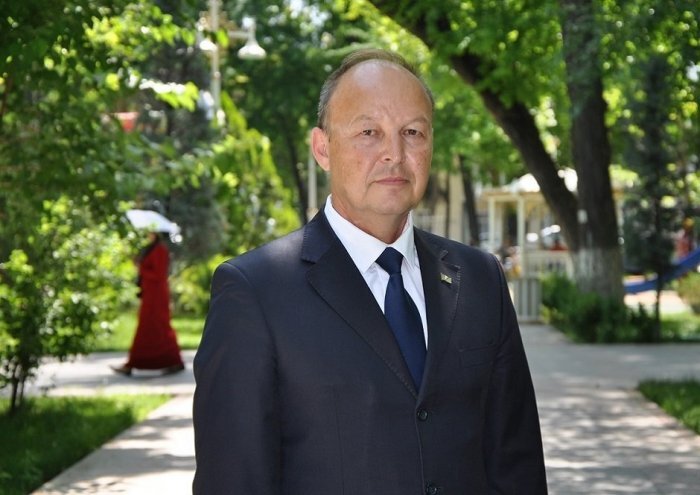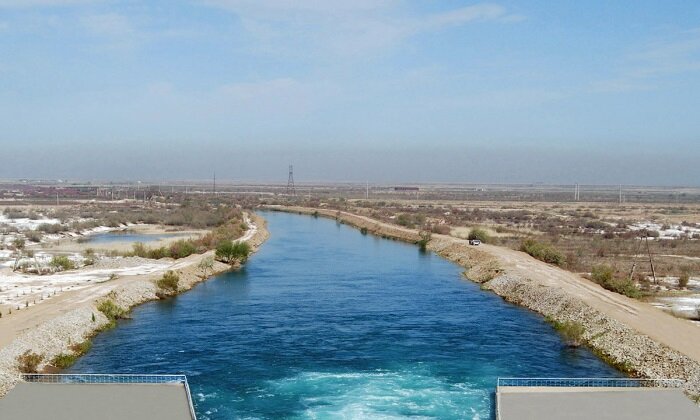The scientist made a «journey» from the Stone Age to the Golden Age.
 In an interview to CentralAsia.news, the leading researcher at the Institute of History and Archaeology of the Academy of Sciences of Turkmenistan Juma Orazklychev spoke about the historical events of the ancient Turkmen land. He raised the topic in the format of an entertaining excursion to the past.
In an interview to CentralAsia.news, the leading researcher at the Institute of History and Archaeology of the Academy of Sciences of Turkmenistan Juma Orazklychev spoke about the historical events of the ancient Turkmen land. He raised the topic in the format of an entertaining excursion to the past.
Hegel’s theory
Georg Hegel believed that the central object of historical science is reason, and in Hegelianism, history appears as a temple of an infinite spirit, from time to time choosing for its incarnation certain peoples who are the creators of history. Let’s try to look at the history of the Turkmen people through the prism of the Hegelian model of the idea of mentality, which teaches us to think not in momentary categories, but in millennia and continents.
The first centers of civilization
Turkmenistan breaks into the first ranks of the most ancient centers of civilization already in the Neolithic era, that is, the New Stone Age (8-5 thousand years BC). In Jeytun, which is 30 km northwest of Ashgabat, the foundation of agriculture, and in particular, the cultivation of cereals, was laid. The settlement, which consisted of 30 houses built according to a single standard, gave its name to the entire Neolithic period of the region — the Jeytun culture.
The next breakthrough occurs in the Eneolithic (5 — 3 thousand years BC) when the ancestors of the Turkmens began to use metal tools. The inhabitants of Uzboy mastered weaving and began to pamper their ladies with jewelry — earrings and rings with such precious stones as carnelian and chalcedony. The settlement of Anau has become the world’s homeland of white wheat culture, in honor of which the only museum in the world «Ak Bugday» was opened here.
With the advent of the Bronze Age (3 — 1 thousand years BC), simultaneously with Babylon, Altyn-Depe appeared on the territory of Turkmenistan.
Chronologically, Altyn-Depe correlates with the reign of Oguz Khan. The French academician Jean-Sylvain Bailly wrote about him the following: «This lord was enlightened and possessed a bright light of knowledge.» Taking into account the peculiarities of the chronology in antiquity, J.S. Bailly determined the year 2924 BC as the year when the Turkmens formed a single people.
Thanks to the research of J.S. Bailly, we now know that the Turkmen nation is one of the oldest in the world. «They were giants, ” writes J.S. Bailly, „because they were perhaps tall and strong, or because the fear they inspired increased their height. These were true Atlanteans“.
Margiana — Wonderland
It was at this time, that is, starting from the 3rd millennium BC, that the first steps to establish regular communications between the centers of civilizations were taken, the sprouts of an intercontinental communication system that represented trade routes from Mesopotamia through Central Asia to the Indus Valley and the foothills of the Pamirs appeared. The central node of this emerging global organization of world space was Altyn-Depe.
At the beginning of the 2nd millennium BC, in the heart of the Karakum, synchronously with the ancient Chinese state, the country of Margiana appeared. The American newspaper «The Boston Globe» noted that Margiana is the oldest center of human civilization, along with Mesopotamia, Egypt, China, and India. Margians knew astronomy, mathematics, and geometry. Jewelers perfected the technique of making jewelry of gold and silver.
The Margians mastered such a special method of metal processing as long roasting, which until recently was considered an invention of the Middle Ages. Linguists studying the Avesta concluded that the word Mouru, mentioned in the sacred book of the Zoroastrians, means Margiana, which is the most suitable for the role of the birthplace of Zoroastrianism.
«The Roman fears the arrows of the Parthian»
In 247 BC, the Parthian dynasty of the Arshakids began. Parthia… It was the empire of heroes! The Turkmen language has the word «palvan», derived from «pakhlavan», which means «hero». Corresponding member of the Russian Academy of Sciences Gennady Koshelenko pointed to another, forgotten meaning of this ethnonym: Palvan is not just a hero, he is a Parthian.
Parthia became the first country in the world whose neutral status was legally formalized by international treaties. The author of this project was Emperor Phraates III, who entered into an appropriate agreement first with Lucius Lucullus, in 69 BC, and 3 years later with Gnaeus Pompey. The Parthian heroes had to prove to the arrogant Romans that neutral does not mean weak, and fear of Parthia was forever imprinted in the poetry of the «golden age» of Roman literature. Here are the lines of Horace:
Our legions have fallen
On Parthia unsuccessfully twice.
The Roman fears the arrows of the Parthian.
The Parthians played a key role in the formation of the Great Trade Route, which was called, not quite deservedly, «silk». By squeezing Rome and China to the margins of geopolitics, Parthia turned them into regional powers and stood at the head of the world economy and culture.
Seljuk renaissance
The baton of control over the continents was picked up in the 6th century by the Oguz Empire created by the Turkmens, which in historiography was called the Turkic Khaganate. The French orientalist Edouard Chavannes, speaking about the significance of the Oguz Empire, calls it the cornerstone of world history, distinguished not only by military power but also by the highest level of art. Here is the description given by the historian of the camp tent of the Oguz emperor: a golden throne, golden statues placed everywhere, urns, jugs, kegs for water. All these masterpieces of jewelry art are made of gold!
In the 11th century, the Great Seljuk Empire appeared on the political map of the world, already the 3rd Turkmen power № 1 on the planet. The power of the empire was so indisputable that under Malikshah a disarmament project was developed, the first in world history in terms of its scale: it was supposed to reduce the number of troops from 400,000 to 70,000!
The beginning of the Crusades and direct contact between the West and the East became the catalysts for the velvet expansion of the Seljuk civilization into Europe, which prepared the Old World for what we now call the European Renaissance.
The period of existence of 3 Turkmen powers — Parthia, the Oguz, and the Great Seljuk empires — can be called, according to the terminology of the theorist of existentialism, the German philosopher Karl Jaspers, «axial time». The large imperial triad held in its hands the world space organized by it for one and a half thousand years. This period was of global significance not only for the Turkmen nation but also for all mankind. Peoples and civilizations were more and more drawn into the orbit of a large imperial triad, which contributed to the formation of an integral mental map of the world.
Political and economic maps are changing relatively quickly and even rapidly. The cultural map of the world has more inertia, but due to mutual enrichment, the culture of a nation, no matter how conservative its foundations, is still in constant motion. But the mentality of the people, even with the rapidly changing external attributes of civilization, remains unchanged.
Holy Independence
After several centuries of calm, in 1991, the Turkmen nation, having accumulated strength for new historical achievements, again entered the world stage, now as independent Turkmenistan. Within 4 years, Turkmenistan became the first state in the world whose neutral status was recognized by the United Nations. Historical studies have proved to the whole world that the Turkmen people faithfully follow the course of their ancestors, who already showed the world the standard of a neutral power 2 millennia ago.
Now a golden age has come for the Turkmens. Within the terminology of Lev Gumilyov, we entered a passionate wave with good potential. Academician Vadim Masson distinguished 5 passionary layers, when processes that had a reference value for the entire world history took place on the Turkmen land: Jeytun, Altyn-Depe, Margiana, Parthia, and the Great Seljuk Empire. It is necessary to add Anau and the Oguz Empire to this list.
Thus, today we are not just witnesses, but also participants in the rise on the crest of the 8th powerful wave. And although the current achievements of independent neutral Turkmenistan do not fade against the backdrop of its brilliant history, the main achievements are yet to come!





